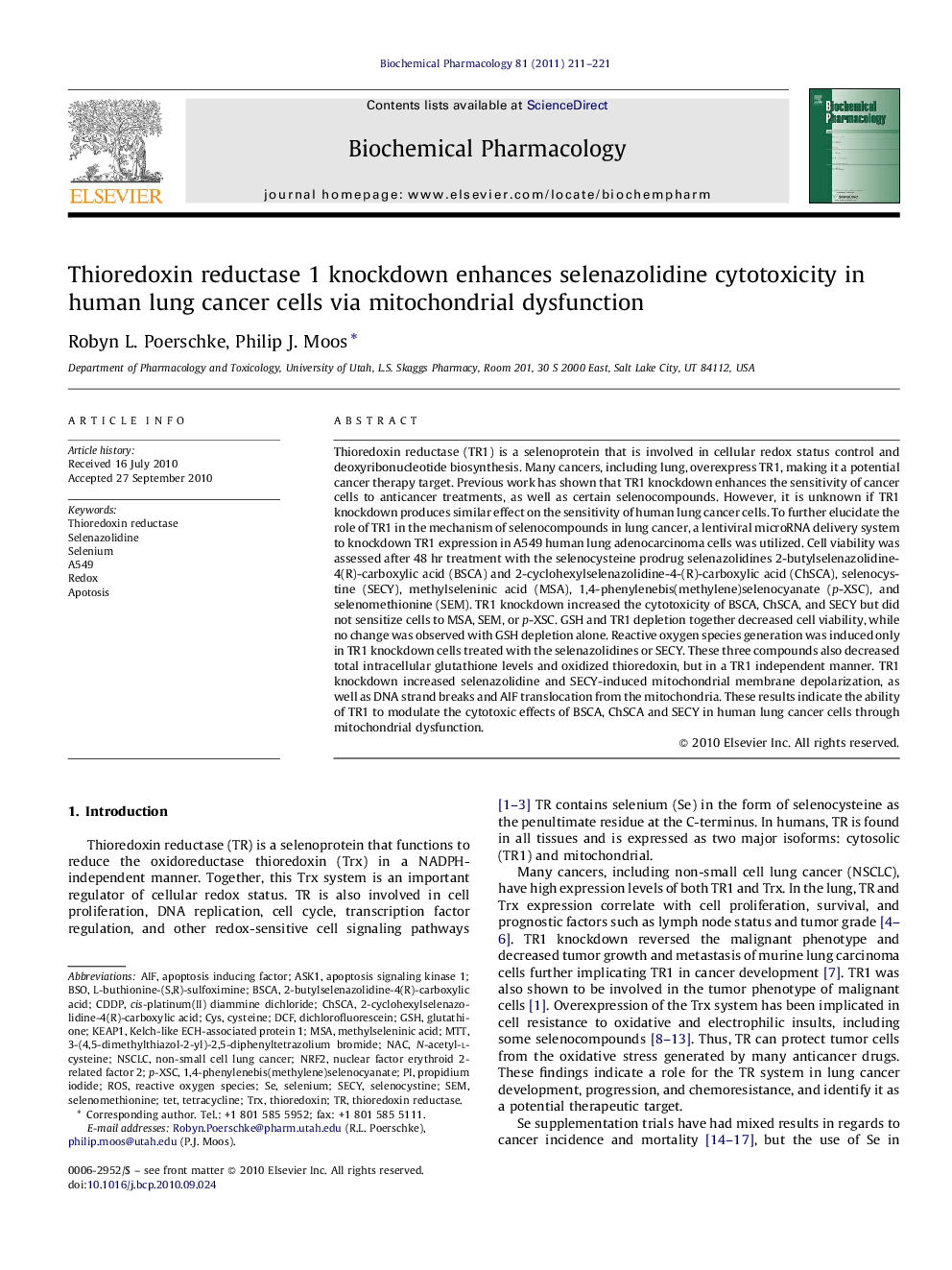| کد مقاله | کد نشریه | سال انتشار | مقاله انگلیسی | نسخه تمام متن |
|---|---|---|---|---|
| 2513002 | 1118388 | 2011 | 11 صفحه PDF | دانلود رایگان |

Thioredoxin reductase (TR1) is a selenoprotein that is involved in cellular redox status control and deoxyribonucleotide biosynthesis. Many cancers, including lung, overexpress TR1, making it a potential cancer therapy target. Previous work has shown that TR1 knockdown enhances the sensitivity of cancer cells to anticancer treatments, as well as certain selenocompounds. However, it is unknown if TR1 knockdown produces similar effect on the sensitivity of human lung cancer cells. To further elucidate the role of TR1 in the mechanism of selenocompounds in lung cancer, a lentiviral microRNA delivery system to knockdown TR1 expression in A549 human lung adenocarcinoma cells was utilized. Cell viability was assessed after 48 hr treatment with the selenocysteine prodrug selenazolidines 2-butylselenazolidine-4(R)-carboxylic acid (BSCA) and 2-cyclohexylselenazolidine-4-(R)-carboxylic acid (ChSCA), selenocystine (SECY), methylseleninic acid (MSA), 1,4-phenylenebis(methylene)selenocyanate (p-XSC), and selenomethionine (SEM). TR1 knockdown increased the cytotoxicity of BSCA, ChSCA, and SECY but did not sensitize cells to MSA, SEM, or p-XSC. GSH and TR1 depletion together decreased cell viability, while no change was observed with GSH depletion alone. Reactive oxygen species generation was induced only in TR1 knockdown cells treated with the selenazolidines or SECY. These three compounds also decreased total intracellular glutathione levels and oxidized thioredoxin, but in a TR1 independent manner. TR1 knockdown increased selenazolidine and SECY-induced mitochondrial membrane depolarization, as well as DNA strand breaks and AIF translocation from the mitochondria. These results indicate the ability of TR1 to modulate the cytotoxic effects of BSCA, ChSCA and SECY in human lung cancer cells through mitochondrial dysfunction.
Figure optionsDownload as PowerPoint slide
Journal: Biochemical Pharmacology - Volume 81, Issue 2, 15 January 2011, Pages 211–221